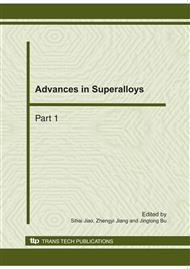p.1569
p.1574
p.1578
p.1583
p.1587
p.1593
p.1597
p.1601
p.1605
Effect and Solid Solution Mechanism of Co2O3 during C3S Formation
Abstract:
C3S is one of the most important mineral phases in silicate cement clinker; alternative ions could be solidified into C3S crystal lattice. Therefore, the research on solid solution mechanism was studied, which was about C3S doped with ions, Meanwhile, the achievement of this paper could be taken as a guidance for cement clinker industry. The effect and solid solution mechanism of Co2O3 during C3S formation were studied by means of chemical analysis, XRD and phase diagram analysis. The results show that when Co2O3 additive was less than 1.5% in mass, the content of f-CaO increased with the increase of Co2O3, and the formation rate of C3S was accelerated by Co2O3; when Co2O3 addition exceeded 1.5%, the content of f-CaO decreased with the increase of Co2O3.By the least square method and defined f-CaO, the molecular formula that Co2O3 solidified in C3S could be deduced: (Ca3-0.86x Co0.86x) (Si1-0.14xCo0.14x) O5 (x=0.0209).
Info:
Periodical:
Pages:
1587-1592
Citation:
Online since:
October 2010
Authors:
Keywords:
Price:
Сopyright:
© 2011 Trans Tech Publications Ltd. All Rights Reserved
Share:
Citation:


